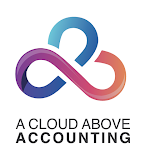As a small business owner, you know the importance of keeping accurate financial records. The complexities of bookkeeping and tax preparation can often feel overwhelming though. By integrating these two essential tasks, you can streamline your business operations, save time, and reduce stress.
In this blog post, we’ll look at the benefits of integrating bookkeeping and tax preparation and provide practical tips to help you implement this strategy.

The Power of Integration
Integrating bookkeeping and tax preparation can significantly improve your financial management. Here are some key benefits:
- Time Savings: By using integrated software, you can automate many tasks, such as data entry and report generation. This frees up your time to focus on other important aspects of your business.
- Improved Accuracy: Automated processes reduce the risk of human error, maintaining accurate financial records.
- Enhanced Financial Visibility: Real-time access to financial data allows you to make informed decisions and track your business’s performance.
- Simplified Tax Filing: Integrated systems can streamline the tax filing process, helping you avoid costly mistakes and penalties.
Top 10 Tips for Successful Bookkeeping and Tax Preparation Integration
Think of bookkeeping and tax preparation like two parts of the same puzzle. When they fit together properly, you save time, reduce stress, and potentially save money on your taxes. These top 10 tips will help you create a seamless connection between your daily bookkeeping tasks and your tax preparation needs. Whether you’re just starting out or looking to improve your existing processes, these practical tips will help you build a more efficient financial system for your business.
1. Create a Year-Round System
The foundation of effective bookkeeping and tax preparation lies in developing a consistent year-round system. Many business owners make the mistake of treating tax preparation as a once-a-year event, but successful integration needs ongoing attention throughout the year.
Start by setting up a structured filing system that works for both daily bookkeeping and tax requirements. Our cloud bookkeeping services can help you establish digital workflows that make document management simpler and more efficient.
Key system components should include:
- Digital receipt management
- Real-time expense tracking
- Income classification systems
- Tax document storage
- Regular backup procedures
2. Choose the Right Technology
Selecting the right tools makes integration significantly easier. Accounting software like QuickBooks or Xero forms the backbone of your system, but complementary tools add essential functionality.
Essential technology considerations:
- Cloud-based accounting software for accessibility
- Receipt scanning apps for immediate documentation
- Expense tracking tools for real-time categorization
- Secure document storage solutions
- Tax preparation software integration
Think about how each tool contributes to both your daily bookkeeping and tax preparation needs. Look for solutions that offer:
- Automated bank feeds
- Custom report generation
- Multi-user access
- Audit trail capabilities
- Tax category mapping
3. Establish Clear Documentation Standards
Documentation forms the bridge between bookkeeping and tax preparation. Clear standards help ensure you capture all necessary information the first time, eliminating the need for time-consuming research during tax season.
Create specific procedures for:
- Transaction descriptions (include tax-relevant details)
- Receipt management (both digital and paper)
- Business expense documentation
- Income source tracking
- Asset purchase records
4. Master Monthly Reconciliation Practices
Monthly reconciliation is about maintaining tax-ready records. Our small business bookkeeping services emphasize the importance of regular reconciliation as a foundation for both accurate books and simplified tax preparation.
Start each month by:
- Reconciling all bank accounts
- Reviewing credit card statements
- Categorizing transactions with tax implications
- Updating vehicle and mileage logs
- Filing digital copies of important documents
This monthly discipline helps prevent year-end surprises and makes tax preparation smoother. Pay special attention to transactions that might qualify for deductions or require specific documentation for tax purposes.
5. Implement Quarterly Tax Planning
Quarterly reviews serve as checkpoints for both your bookkeeping accuracy and tax preparation readiness. If you’re behind on these reviews, our bookkeeping catch up services can help you get back on track.
Each quarter, focus on:
- Tax Position Analysis: Review your current tax position and projected liability. This helps you adjust estimated tax payments and avoid penalties.
- Financial Review: Examine your profit and loss statements with a tax perspective. Look for trends that might affect your tax strategy.
- Compliance Check: Verify that you’re meeting all tax obligations and maintaining proper documentation.
6. Develop a Classification System
Creating a consistent system for classifying income and expenses serves both your bookkeeping and tax needs. Start by setting up your chart of accounts to align with tax categories. This approach saves time during tax preparation and helps identify tax-saving opportunities throughout the year.
Key classification areas include:
- Revenue streams
- Operating expenses
- Asset purchases
- Employee-related costs
- Travel and entertainment
Consider using cloud accounting services to automate much of this classification process, reducing errors and saving time.
7. Create an Audit Trail System
A clear audit trail protects your business and simplifies both bookkeeping and tax preparation. Think of your audit trail as telling your business’s financial story to potential auditors.
Essential audit trail elements:
- Original source documents
- Clear transaction descriptions
- Supporting documentation
- Logical filing system
- Digital backup copies
8. Set Up Tax-Ready Reporting
Your reporting system should serve both daily bookkeeping needs and tax preparation requirements. Design reports that help you:
Monitor Tax-Related Items:
- Track deductible expenses
- Monitor taxable income
- Review asset depreciation
- Track employee-related expenses
- Monitor contractor payments
Create regular reports that help you:
- Assess tax liability
- Track deductible expenses
- Monitor compliance requirements
- Review tax planning opportunities
9. Establish Professional Relationships
Working with professionals can enhance your integrated approach to bookkeeping and tax preparation. Consider creating relationships with:
A professional tax preparer who can:
- Review your bookkeeping systems
- Suggest improvements
- Provide tax planning advice
- Help with compliance
- Offer strategic guidance
Our bookkeeping cleanup services for small businesses can help make sure your records meet professional standards.
10. Implement Year-End Procedures
Creating structured year-end procedures helps with a smooth transition from bookkeeping to tax preparation. Your year-end process should include:
- Financial Review: Conduct a thorough review of your financial statements, ensuring all transactions are properly categorized and documented.
- Documentation Check: Verify that you have all necessary documentation for tax preparation, including:
- Income records
- Expense receipts
- Asset purchase documentation
- Employee and contractor records
- Vehicle logs

Implementation Strategies for Success
Making these top 10 tips work for your business requires a planned approach.
Getting Started
Begin by assessing your current bookkeeping and tax preparation processes. Look for gaps where better integration could save time and reduce errors. Our small business tax preparation checklist can help you identify areas needing improvement.
Start with basic steps:
- Audit your current systems
- Identify pain points
- Choose appropriate software
- Set up digital filing systems
- Create documentation procedures
Technology Integration
Your technology choices significantly impact success. Modern tools can automate many aspects of bookkeeping and tax preparation integration. Consider implementing:
- Accounting Software: Choose a platform that offers both bookkeeping and tax preparation features. QuickBooks or Xero can serve as your foundation, with additional tools for specific needs.
- Document Management: Use our ‘Streamline Your Cashflow With Accounts Receivable Management Service’ guide to maintain organized, accessible records that serve both purposes.
Let our expert team help you create a seamless connection between your bookkeeping and tax preparation processes. Contact us now to learn how we can help you save time and reduce stress while maintaining accurate financial records.
FAQs
Can I use the same software for bookkeeping and tax preparation?
Yes, many modern accounting platforms offer integrated tax features or connect with tax preparation software.
How do I handle mixed business and personal expenses?
Maintain separate accounts and clearly document any mixed expenses with business use percentages.
Is it necessary to hire a professional for integrated bookkeeping and tax prep?
While not required, professional support can ensure accuracy, especially if your finances are complex.
What are common tax deductions I should track throughout the year?
Track vehicle mileage, home office expenses, professional development costs, and business-related travel.
How often should I review my tax strategy?
Conduct quarterly reviews of your tax position and strategy. Schedule annual planning sessions with tax professionals.
What’s the best way to organize receipts for both bookkeeping and tax preparation?
Use a digital receipt management system, categorize immediately, and backup to cloud storage. Link receipts to transactions in your accounting software.



